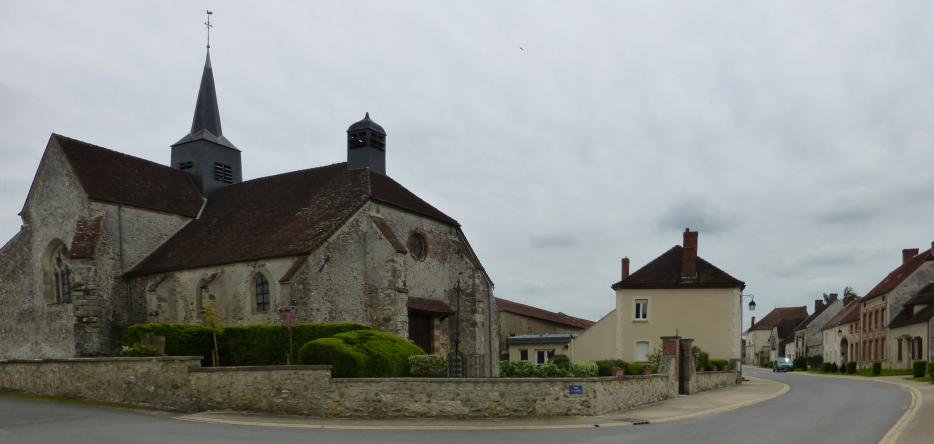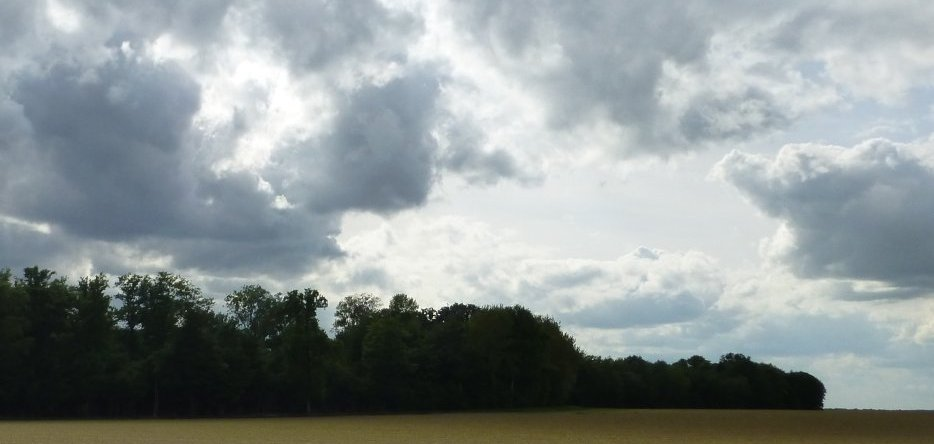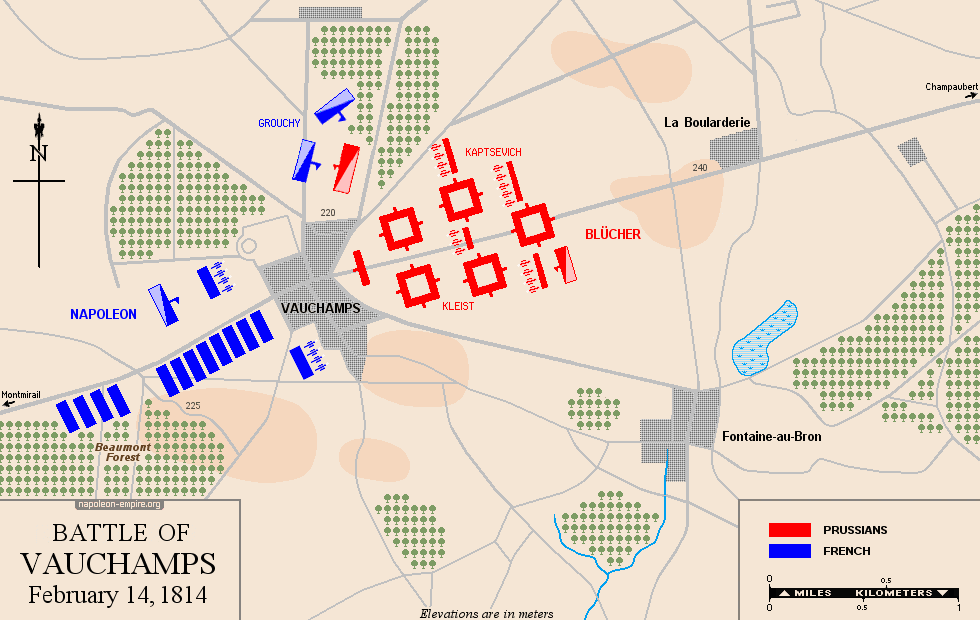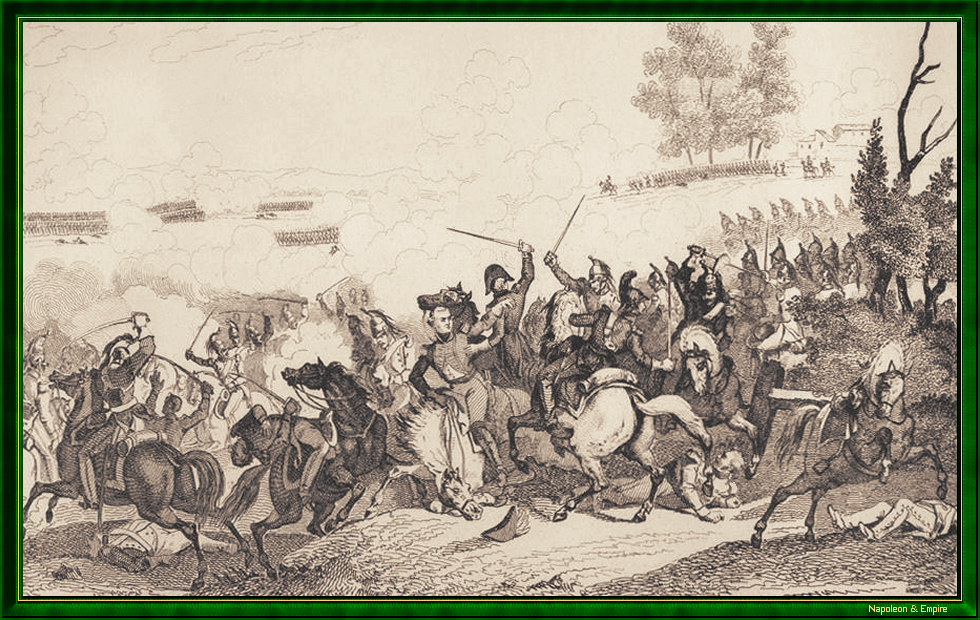Date and place
- February 14, 1814, halfway between Montmirail and Champaubert, in the Marne department (now part of the Grand-Est region).
Involved forces
- French army (18,000 men) under the command of Emperor Napoleon I.
- Silesian army (30,000 men, both Russians and Prussians), under Field Marshal Gebhard von Blücher.
Casualties and losses
- French army: around 600 dead or wounded.
- Russian-Prussian army: around 9,000 dead, wounded or prisoners.
Aerial panorama of Vauchamps battlefield
The general situation
On the evening of his victory at Château-Thierry on February 12, 1814, Napoleon, blocked south of the Marne by the destruction of the town's bridges, saw the escape of generals Ludwig Yorck von Wartenburg and Fabian Gottlieb von Osten-Sacken .
The next day, the crossing of the river was too late for the pursuit, entrusted to Marshal Adolphe Édouard Casimir Joseph Mortier, to put the fugitives in any great danger. They reached Châlons almost without a blow.
Napoleon then thought of turning to Gebhard Leberecht von Blücher, who had been singularly inert since February 10, but who had just set off to try and get news from his lieutenants.
After Champaubert , Auguste Viesse de Marmont was left with a small corps of troops in front of Vertus to face the Prussian general. Unaware of the numbers he was up against, the Prussian general hesitated for a long time before convincing himself of their weakness. And when he learned of his subordinates' defeats, imagining Napoleon on his way to the Seine, he decided to hustle the Duke of Raguse (Marmont) into the Emperor's rear, and marched on Champaubert via Etoges . Marmont, unperturbed, retreated in good order and sent word to Marshal Louis-Alexandre Berthier.
On the evening of February 13th, Blücher was in Champaubert , where he spent the night; Marmont had set up camp a few kilometers to the west, between Fromentières and Janvilliers , ready to react to any Prussian initiative, whether to turn north towards Epernay or to march west towards Paris .
During the night of the 13th and 14th, Napoleon, accompanied by Marshal Michel Ney and the guard, marched on Montmirail, arriving there at around 8am. There he met up with Marmont, who had continued to retreat under the Prussian thrust, finally directed westwards.
Blücher, who had at his disposal the Corps of Friedrich Kleist von Nollendorf and Peter Mikhailovich Kaptzevich (Пётр Миха́йлович Капце́вич) , had 30,000 men with him; Napoleon had only 18,000, a division and some cavalry called in from Viels-Maisons adding to Marmont's troops and his own. Although he was almost half as strong, he had more cavalry, and he was going to exploit this superiority to the full.
Beginning of the battle
On the morning of the 14th, the French suddenly changed their attitude and went on the offensive. Marmont turned and marched on the Prussian-occupied village of Vauchamps.

The line cavalry, under the command of General Emmanuel de Grouchy, turned the enemy to the right (north), through the woods of l'Echelle, Hautefeuille and Serrechamp [Sarrechamps] . The guard was in reserve on the main road.
At this point, Blücher knew nothing of the defeats at Yorck and Sacken, nor of the Emperor's whereabouts. The news that a column of French infantry was approaching from Sézanne (to the south) prompted him to reinforce his left wing just as the French attack was concentrating on his right.
Fighting broke out in Vauchamps. One French brigade approached through the Bois de Beaumont (south-west of the village), another from the front.

The first successes were Prussian, but their exploitation turned into a disaster. The defenders of the village, trying to pursue the attackers they had just repulsed, were exterminated or taken.
After two hours of fighting, with his stronghold broken and his rear threatened, Blücher, whose offensive had failed and who found himself reduced to the defensive, ordered a retreat and began to fall back towards Champaubert and Etoges, to the east.
Prussian retreat
Unfortunately for Blücher and his soldiers, the terrain around Janvilliers [48.89526, 3.64924] was completely uncovered, making it particularly suitable for French cavalry movements. Grouchy succeeded in forcing several Prussian squares, some 2,000 men strong, to lay down their arms at the edge of the woods between Saint-Martin d'Albois and Etoges.
Napoleon, exploiting this success, sent in further contingents of cavalry. The remaining squares were in disarray. 500 new prisoners were added to the previous ones. The French infantry reached Fromentières [48.88976, 3.70646]. It was around 2 p.m.
To delay the French, Blücher tried to call in his artillery, but Napoleon retaliated by using the artillery of the Guard, commanded by General Antoine Drouot . The allies were outclassed, and could only muster half a dozen cannon to counter the fifty or so that pounded their retreat for almost two hours.
Having finally lost more time than they had gained, the Prussians left Grouchy free to prepare one last nasty surprise.
In the late afternoon, Blücher found his line of retreat cut off by French cavalry in front of Champaubert. At the head of his men, Grouchy led the charge against Allied columns already severely tested by the day's fighting.
Then the cavalry of the Imperial Guard caught the enemy at their heels and finished the job. The last Prussian squares were crushed, and only the delay of the artillery, hampered by impassable roads, saved them from complete extermination.
Pursuit
Nightfall did not dampen the spirits of the French, who continued to bayonet the enemy in the streets of Etoges and beyond, under the command of Marshal Marmont.
Six hundred Allies were taken prisoner in the village, including General Alexander Petrovich Urusov (Александр Петрович Урусов) , who was in command there. Blücher himself and his staff were on the verge of being taken, and owed their salvation only to their sabres and the darkness that prevented their adversaries from recognizing them.
Results of the battle
French losses in the battle of Vauchamps amounted to just 600 men. On the other side, 7,000 dead and wounded were added to 2,000 prisoners, making this day one of the darkest of the campaign for the Allies.
In the evening, while Marmont remained at Etoges, Napoleon returned to Montmirail for the night. As for Blücher, he crossed the Marne the next day, and continued on his way over the following days to beyond Châlons , where he was soon joined by the other remnants of his army. He was deprived of all operational capability for some time.
The battle of Vauchamps brought to a close this fabulous "six-day campaign", during which the Imperial army inflicted four consecutive defeats on the Silesian army, inflicting losses ten times greater than his own (more than 30,000 men killed, wounded or taken, compared with barely 3,000).
Battered and dislocated, the Russo-Prussians were temporarily out of action. A stronger or more combative Marshal Étienne Macdonald would give the Emperor a few more days to finish the job. Not so. With Blücher temporarily eliminated, Napoleon had to turn to the Seine and Schwartzenberg. This one, coming out of his torpor, had just crossed the river and resumed the offensive.
Map of the battle of Vauchamps

Picture - "Battle of Vauchamps". Engraving by Jean-Baptiste Réville.

A column in the village of Vauchamps commemorates this French victory.
 Display the map of the Campaign in northeast France in 1814
Display the map of the Campaign in northeast France in 1814
Photos Credits
Photos by Lionel A. Bouchon.Photos by Marie-Albe Grau.
Photos by Floriane Grau.
Photos by Michèle Grau-Ghelardi.
Photos by Didier Grau.
Photos made by people outside the Napoleon & Empire association.